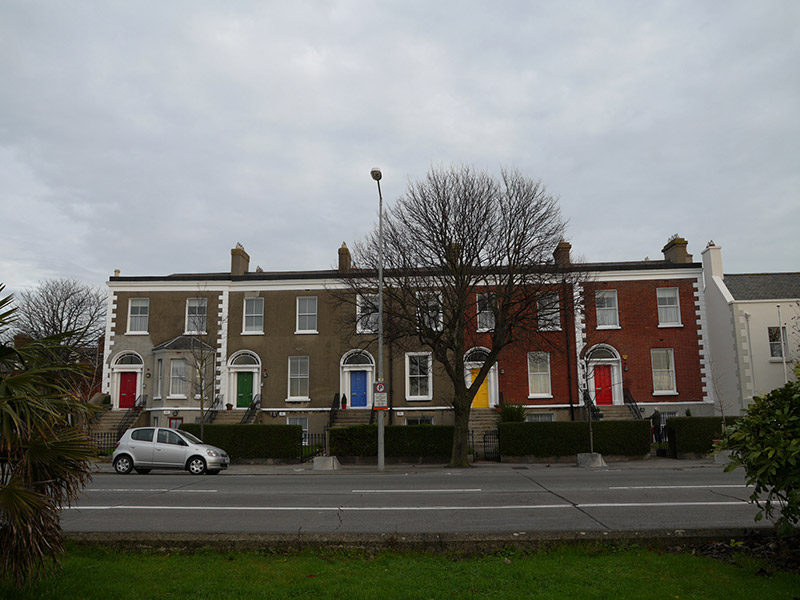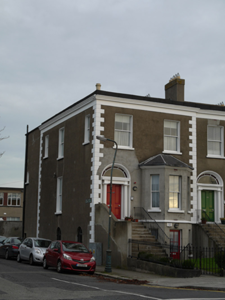Survey Data
Reg No
50030133
Rating
Regional
Categories of Special Interest
Architectural, Artistic
Previous Name
Rostrevor Terrace
Original Use
House
In Use As
Apartment/flat (converted)
Date
1860 - 1870
Coordinates
319998, 235890
Date Recorded
24/11/2014
Date Updated
--/--/--
Description
End-of-terrace two-bay two-storey house over raised basement, built c. 1865, having canted-bay window to basement and ground floor level, and three-storey return with pitched roof to rear (north). Pitched M-profile natural and artificial slate roofs having parapet to front (south) elevation with cornice and platband, smooth rendered chimneystacks with clay chimneypots, and some cast-iron rainwater goods. Hipped slate roof to return. Lined-and-ruled rendered walls, having render quoins. Roughcast render to rear elevations. Square-headed window openings having two-over-two pane timber sliding sash windows with cut granite sills. Round-headed replacement timber windows to basement level of west elevation. Round-headed door opening having Doric columns supporting plain frieze and cornice, timber panelled door and fanlight with coloured glass margin lights. Cut granite steps and platform having cast-iron balustrade and boot-scrape. Set back from road, having cast-iron railings on granite plinth wall, and cast-iron pedestrian gates.
Appraisal
This early suburban house has an intact appearance with an elegant form and raised entrance. Historic fabric remains to sash windows, railings and the rear return. The front garden boundary to the street remains intact and contributes to the early character of the terrace. The house and its neighbours were built by two partners, Joseph Plunkett and Robert Magee, on land leased from the Vernon estate in 1861 and the two partners divided their interest in the completed terrace in 1866. The terrace is among the earlier surviving developments on the seafront that became known as Clontarf Road in 1912. This area was known as Clontarf Sheds due its longstanding previous use as drying sheds for the fishing industry.



